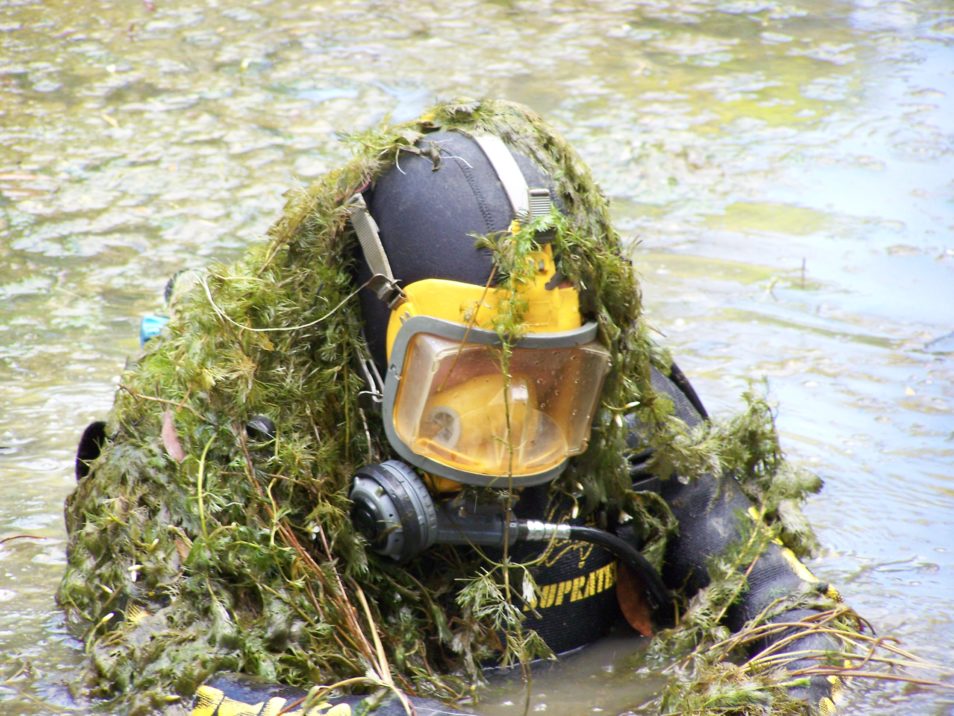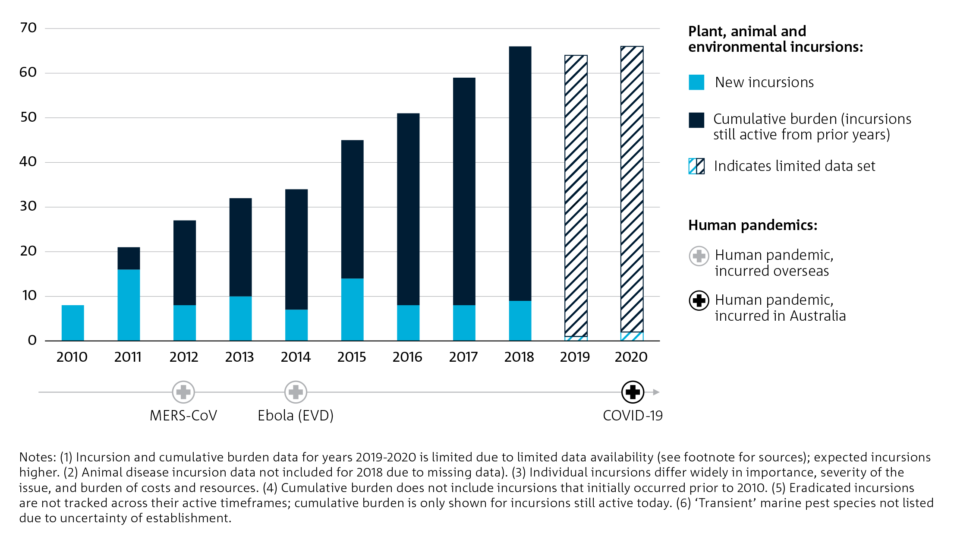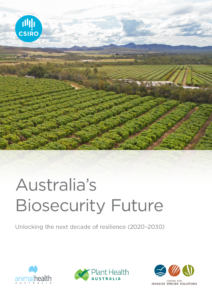
This diver covered in invasive weed shows why Australian biosecurity is important. Cabomba (Cabomba caroliniana) invades water bodies in Australia.
Koalas. Emus. Wombats. More than 80% of Australia’s native animals and plants are unique to Australia and are found nowhere else in the world. We are also one of the most biodiverse countries on Earth.
Protecting this biodiversity is just one of many crucial jobs of Australia’s biosecurity system. Biosecurity is critical to supporting the health of Australians and our environment. It also underpins the competitiveness of our key industries and exports.
Our new report, Australia’s Biosecurity Future, says the biosecurity system is due for a rethink to safeguard against the coming decade’s challenges. It shows how Australia could transform its biosecurity system to prepare for these emerging threats.
First, the good news
Australia is the world’s most isolated continent, bar Antarctica. It has strong physical barriers that stop diseases, pests and weeds from entering across national borders.
However, the Australian biosecurity system further shields us from the serious damage of diseases, pests and weeds. It’s one of the strongest systems in the world.
The Australian biosecurity system consists of everything from the Border Force officers you meet at the airport and the equipment that scans your online purchases as they arrive in Australia. It also includes robust border control, strong regulations and world-class animal health laboratories like the Australian Centre for Disease Preparedness (ACDP) in Geelong.
Together, they underpin Australia’s global reputation as a trusted, high-quality exporter of agricultural and other products.
This system additionally protects environmental assets worth $6.5 billion. It also saves the nation billions of dollars a year by keeping economically crippling contagions like Foot and Mouth Disease from our shores.

A graph showing the surge in the biosecurity risk materials seized from 2010 to 2020
Now the bad
The current system is great. But the Australia’s Biosecurity Future report says the system won’t cope with the increasing threat and complexity of disease, pest and weed incursions over the next decade.
Growing levels of trade and travel, urbanisation, climate change, biodiversity loss, and Antimicrobial Resistance (AMR) are all creating new challenges. And our current biosecurity system isn’t designed to meet them.
Numbers are already on the rise. Between 2012 and 2017, the annual number of seizures of biosecurity risk materials at Australian borders rose by almost 50 per cent – to 37,014. There’s also a growing burden created by species which have yet to be eradicated or have been deemed ineradicable.
In fact, a federal government report found that even if Australia almost tripled its investment in the current system, we still wouldn’t be able to handle what’s coming.
In other words, we need to work smarter, not harder.
How Australia navigates these challenges over the next decade will significantly impact the health of Australians. It will also impact our communities, ecosystems, agricultural systems and food security into the future.
So, what’s the solution for Australian biosecurity?

Front cover of “Australia’s Biosecurity Future.”
Australia’s Biosecurity Future says there are three key areas where Australia needs to focus.
The first is system connectivity. Australia’s biosecurity system is complex. All levels of government, industry, research, community and sectors share responsibility. We need to increase efficiency and identify emerging risks. We also need to make better use of digital platforms that allow speedy data sharing across supply chains and disparate industries.
Secondly, there’s shared responsibility. Ultimately, everyone in Australia – be they individuals, companies or entire industries – benefit by keeping Australia’s biosecurity strong. We need to ensure the entire community understands they all have a role to play and are ready to help. It would help if the community develops a greater understanding of how important biosecurity is. We need to keep an eye out for new threats or the spread of existing pests and diseases. For companies, it would mean contributing to our biosecurity system through adherence to the rules and helping with surveillance.
Lastly, there’s science and technology. Biosecurity is not only a challenge – it’s also an opportunity. By embracing high-tech solutions such as machine learning, automation and sensors, we can support the development of new industries. We can also export dollars for Australia, plus bolster our global reputation for biosecurity excellence.
A more resilient, coordinated and collaborative biosecurity model would result in fewer incursions, aid exports and require fewer resources. It would also more efficiently identify and manage emerging risks.
Australia’s Biosecurity Future was developed by CSIRO Futures, the strategic and economic advisory arm of CSIRO. Alongside partners Plant Health Australia, Animal Health Australia, and the Centre for Invasive Species Solutions.


6th February 2023 at 9:30 pm
This post is very interesting, thanks for your contribution.